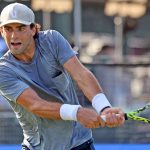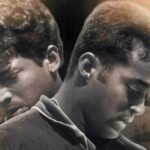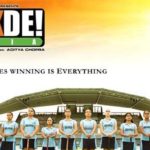A typical scene at the bett1HULKS tennis tournament during the last two weeks at Cologne’s LANXESSarena: Alexander Zverev (who swept both singles tournaments, by the way – great performance!) at first serve. The ball hits somewhere near the edge of the service court. A female voice is sounding through the arena. “OUT!”. The typical first reaction of a tennis fan: looking at the linesmen. Was the shot too long? Or was it too wide? I looked at the borders of the court, looking for the stretched arms of the line judges and saw: nothing! Like at the US Open before, the bett1HULKS used automated linesmen, based on the Hawk-Eye system. By the way, in contrast to the Antwerp tournament in parallel. I felt to blog about it and my experience with it.
The coverage of the bett1HULKS tournament has been done in collaboration with

This blog entry does not necessarily reflect the view of IndianTennisDaily.com, though.
At the end of 2020, I decided that this posting is my favorite one published 2020.
Hawk-Eye Live – How does it work technically?
Hawk-Eye is has been originally developed in the United Kingdom by Paul Hawkins, originally intended to support calls in cricket. The technology used for tennis is in general the same as you for example use for the goal line technology in soccer: multiple high-resolution cameras, typically located under the stadium roof (in Cologne and for tennis in general, they are rather placed on a comparably low level) follow the ball in every situation of the match. According to wikipedia, you work with ten cameras in tennis. In general, by comparing the ball position with fixed positions in the arena (the fixed positions are typically camera positions itself), you can technically follow the path of the ball. This also allows the system to predict the path of ball, even if it cannot completely follow it. The decision whether the ball is in or out is decided on the path, not on the footprint of the ball. You should also clearly mention that the visualization you see in TV and in the arena is not an exact camera picture, but just an illustration – this caused discussions here and there at the bett1HULKS, for example.


By the way, one of the key reasons that the technology has been used in Cologne and not in Antwerp might simply be that Hawk Eye Innovations Ltd., the company which is driving this high definition camera technological wonder, is not only having three offices in the UK, but also one in Cologne. The system is tested and used in very different sports, ranging from cricket, tennis and soccer to NASCAR racing.
Is the Hawk-Eye fully reliable?
The answer is a clear no. I guess that the technology is constantly improved, but finally, there are technical limits by numerical exactness and the number of frames you can achieve while following the ball. I found a 2016 brochure by Hawk Eye technology stating that the mean accuracy is 2.6mm – which might sound quite cool, but in fact,
- This is a purely stochastic information (a mean) – they do not give information about the variance of the exactness. Even with many frames per second, the variances should increase with higher ball speed or adverse settings like low light / bad sunlight.
- The dimensions of tennis are quite small in general: a sideline is between 25 and 50mm (see ITF Rules of the Game), and the ball, which roughly has a diameter 65mm may have a very odd footprint on the court. If you are interested in that topic, I highly recommend you a 2014 paper by Rod Gross, The footprint of the tennis ball, which is showing in a lot of detail the footprint of a tennis ball and the impact of the speed on it.
- Finally, these are figures for the hawk-eye techology itself. In Cologne, they used Hawk-Eye Live, which takes decisions during a running game. Thus, even if technology has evolved over the years, I would expect that the extremely short time frame you have from the touch of the ball on court to the decision given to the chair umpire whether the ball is out or not is extremely short – which means you have less time to compute the parth of the ball aka less accuracy.
Hawk-Eye Live Is wrong sometimes!
As a mathematician like me, you must criticize the way Hawk-Eye has been implemented to the sports. It is presented in a way that you feel it gives you a definite and non-challengeable decision on whether the ball has been in court or not – but in fact it just a decision which is likely correct with a certain, potentially high reliability.

I am not bashing the system at all – I guess that it will be much better than any human linesman can ever be. If you struggle with that, I highly recommend to have a game on that website, where you can try to do line umpire calls as a test online. The people who do the line umpire in tennis tournaments must be extremely well trained, in great phyiscal / visual condition and have a lot of experience to reach an accuracy which is acceptable for higher class tennis. Even if you do a good score in the game, you should bear in mind that in reality, you additionally fight against views blocked by the player, low sun or similar challenges on top of the call itself.
Some Hawk-Eye Live Failures
Said again, I feel that the system is a a very interesting technical innovation, which is having a lot of potential to improve decisions in tennis. Still, it might just complete the picture to point out two quite prominent failures of Hawk-Eye Live.
For example, this New York Times article about the Hawk-Eye Live technology to be used at the 2020 US Open states a quite well-known example of a New York Empire vs. Chicago Smash World Team Tennis, where the line umpire finally overruled the Hawk-Eye Live decision. Unfortunately, I could not find a video about that. In contrast to that, there is plenty of footage of a non-given goal by Sheffield United vs. Aston Villa in soccer, as of June 2020. The likely cause of the fail is that Hawk-Eye lost track of the ball as it is covered by the goalie, his arms, other players and the goal cage. This is, by the way, a beautiful example suggesting that the referee has not understood how the technology is working. There are so many players and environment around the ball that it is not too surprising that views could have been blocked and thus the system becomes unreliable. To me, this is not a Hawk-Eye, but a referee (and maybe: referee training) failure.
Hawk-Eye Live – How did it impact the game?
I could not find written rules of tennis under Hawk-Eye Live, but in general, the chair umpire must not overrule the system. The only exception are (obvious or reported) technical malfunctions. There are also no challenges against the system – you could for example imagine that a player challenges the call and then it is re-calculated with more computation time and thus higher accuracy. Most articles from sports magazines I read about this topic did not discuss this potential that you could in fact challenge Hawk-Eye Live by Hawk-Eye itself. Close calls at the end of a rally were indeed illustrated on the screens.


The good thing about using Hawk-Eye Live is that (most) players also seemed to be happy that they can do their job again and in fact do not really know how the system works (or they feel it is needless to complain about it…). The atmosphere on close calls in LANXESSarena was much more calm and relaxed than what I saw in earlier time in human-umpired matches, either on TV or at courtside. There were, however, players, who did complain about calls. Two I remember were Alexander Zverev and Denis Shapovalov in their singles matches. Here and there, the voice of the chair umpire had to replace Hawk-Eye Live, which is giving an automated voice (there are different characters, male and female, which is quite entertaining).
Foot Fault
Just a side note on the impact of Hawk Eye Live: many players seem to feel offended when a (human) line umpire calls a foot fault at serve. The acceptance of these calls, which can also be made by Hawk Eye Live, has been significantly higher. I saw more foot fault calls than I have been used to – and less discussion about it. Just assuming that players feel offended somehow by human umpires reveling this rule violation.
The Challenge System
As said, there were no challenges allowed against Hawk-Eye Live (in contrast to human calls in the past). I just personally feel to add that I feel that I always hated the way challenges in tennis are presented, especially in TV. Very often, after a successful challenge, TV showed the “faulty” line umpire in full screen. Ain’t that some sort of medieval pillory and you virtually spit on this person for his “terrible” behavior for a second? I can just refer to the umpire game again. Try it out and see how difficult the job of the people is – and the conditions under which line umpires are working for professional tennis are quite poor to what the people have to invest into it and to the money made in the sports.
Hawk-Eye Live – The down-side
Even though I state that I feel you should pay line umpires better than you do today, I feel the introduction of Hawk-Eye Live also has a strong human factors. The people you see in the sponsor-branded sportswear each and every day and the edges of a professional tournament tennis court are the ones which drive the sports. You need line umpires for challengers and futures, there will not be Hawk Eye Live at a 10k ITF future out of nowhere. There will be people who do the job – and I guess part of the motivation they have to line judge or chair umpire matches at these tournaments is that they want to be at a grand slam or at least a professional tour event one day.
Removing human line umpiring in highly professional tennis might cause a big impact lower level events, down to amateur and junior level. These people drive the sports without any kind of publicity. Can you name any line judge on a US Open Men’s Final (if you are not related to one?). From my personal refereeing background, I strongly guess this has been the moment of their lives for the men and women out there.
Respect the Umpires!
Another argument why I feel negative about Hawk-Eye Live is that it is blurring a problem we got in professional tennis nowadys: I feel that the respect of many professional players towards the rules and the umpires of the match is too low. If you for example followed the recent discussions about Djokovic’s ball of a line umpire hit in Flushing Meadows, you read comments about his default which make you feel like it was the lady’s fault to get hit by a ball. I remember Serena Williams threatening a line umpire after a call she did not agree to. In other sports, this behavior is absolutely unacceptable.
You remove an issue you have by removing the line umpires – and giving the chair umpire just very limited potential to really judge on the plays. In mid term, I am sure you will make things worse – because you will have worse chair umpires with a shorter record of critical situations they solved well (or bad and learned from them).
You take a Risk
At least the Hawk-Eye technology has proven to be overall reliable – though you had situations here and there, where it was not working properly in the past. If you generally replace human line judging by algorithms, you do not have a fall-back. The only fall-back is that the chair umpire is taking the calls, which is even for experienced people, leading to a massive increase of the potential of faulty calls compared to human line judges, just due to unfortunate perspective. This is a risk you need to accept when you go the route.
Hawk-Eye Live – My View
At the moment of the pandemic, Hawk-Eye Live is just a welcome opportunity to reduce the number of people on and around court. I would definitely not say that it is a bad thing – but I would clearly love to see that tennis is reflecting more about the system: understanding that it is not perfect, understanding the stochastic behind these kind of decisions, but more than that discussing what professional tennis with Hawk-Eye Live would mean. Yes, Hawk-Eye Live would have prevent scenes like the parallel tournament in Antwerp for example had in the Khachanov match (see below), but sometimes you have accept human failure as well. You do not replace players by robots to reduce the number of mistakes on court as well. Umpires are part of the match, in almost any sports. Thus, I am very mixed in my thoughts about this development in tennis.
Postings about Tennis
Here are all postings which are related to tennis on Flyctory.com

Even though I just could be in Biel on Friday and Saturday, I really enjoyed being back at a Davis ...

A triple "Do or die" matchday for Switzerland and one of the biggest chances since years for India getting back ...

End of March 1993, Kolkata (at that time: Calcutta), Calcutta South Club. Leander Paes and Ramesh Krishnan beat the superior Swiss ...

When I visited Atlanta in 2018, I wrote a post Atlanta 1996 - 22 years later, visiting former sites of the ...

The Featured Artists - musicians, which are in special focus and also get a little more service and attention from ...

has come to an end - and my Best of posting is the one which is "traditionally" concluding the year. The ...

You cannot over-estimate the performance of German Viktorija Cesonyte. After she won the almost three hour girls singles final at ...

After the epic girls singles final, the boys went to decide their singles winner in Düren. At the Internationa German ...

After the dramatic girls singles final, the second match I present you from the Tennis Europe Super Category tournament in ...

On 3rd August 2024, I headed to Düren, some 50 kilometers West of Cologne. My aim was to cover the ...

Apart from being ill, the week at the Infosys Hall of Fame Open 2024 in Newport, Rhode Island, has truly ...

The men's singles final, held on 21st July 2024 at the Infosys Hall of Fame Open in Newport, was a ...

The first match on the last day of the Infosys Hall of Fame Open has been the doubles final. At ...

After I had to skip the whole Friday at the Infosys Hall of Fame Open due to sickness, I was ...

After the Indians Chandrasekar and Kadhe advanced to the doubles' semifinals, I headed straight to Center Court of the Infosys ...

After their promising first round victory, the Indian doubles pairing Ariundh Chandrasekar and Arjun Kadhe had to play their quarterfinal ...

The big moment is coming closer. On Thursday, 18th July 2024, the three inductees into the International Tennis Hall of ...
![Hall of Fame Open 2024 - MD R1: A. Goransson (SWE) / S. Verbeek (NED) - J. Paris (GBR) / R. Ramanathan (IND) 6-3 4-6 1-x [10-8]](data:image/svg+xml;base64,PHN2ZyB3aWR0aD0iMSIgaGVpZ2h0PSIxIiB4bWxucz0iaHR0cDovL3d3dy53My5vcmcvMjAwMC9zdmciPjwvc3ZnPg==)
The last Indian player to kick off duties at Newport was Ramkumar Ramathan. Getting into the men's doubles main draw ...
![Hall of Fame Open 2024 - MD R1: Lemmins / Withrow (USA) - Chandrasekar / Kadhe (IND) 3-6 6-3 x-1[7-10]](data:image/svg+xml;base64,PHN2ZyB3aWR0aD0iMSIgaGVpZ2h0PSIxIiB4bWxucz0iaHR0cDovL3d3dy53My5vcmcvMjAwMC9zdmciPjwvc3ZnPg==)
After Rithvik Choudary Bollipalli and Niki Kaliyanda Poonacha had already bowed out of the Infosys Hall of Fame Open 2024 ...

For the last Infosys Hall of Fame Open match I featured on Tuesday 16th July 2024, I went back to ...

Tuesday, 16th July 2024, also kicked of the men's doubles competition at the Infosys Hall of Fame Open 2024. The ...

Around 100 degrees Fahrenheid and high humidity - the Indian team Rithvik Choudary Bollipalli and Niki Kaliyanda Poonacha could not ...

After having had a look into the men's singles main draw match of Mayot and Kovacevic, I went back to ...

First day of the main draw - Monday, 15th July 2024, did not only feature the first matches of the ...

On 14th July 2024, I finally reached the holy grounds of the International Tennis Hall of Fame. The Infosys Hall ...

The first day at the Infosys Hall of Fame Open also featured one match which was interesting from an Indian ...

Since a couple of years, I have a group of so-called Featured Artists - musicians, which are in a special ...

In the life of a sports fan, there are those days you simply remember. Great victories and upsets, huge disappointments, ...

Tennis is back on lawn these days - and this also means that professional tennis players and tennis fans are ...

A 75k ATP Challenger right next to the city where I grew up? Troisdorf near Bonn and their tennis club ...

If you know me or follow my website, you also know that I might not be the biggest tennis fan ...

The last posting of the year - Best Ones 2022 is introducing you to my best experience last years (as ...

After Norway took the straight lead on Day 1, they were almost mandated to get to the Qualifiers of 2023 ...

Crunch time on day 1. Some of the hosts felt very sure that Casper Ruud's appearance in Lillehammer might be ...

One year after being with the Indian team in Espoo, Finland, I was so flattered that it was Davis Cup ...

There is one guy which gave me the initial crush with Indian tennis - Leander Paes. But in fact the ...

Covid-19 and the corresponding social distancing rules make it rather hard to meet with the team before and interact with ...

Hard to argue against that Finland was in the comfort position at this World Group I playoff tie in Espoo ...

Tennis Davis Cup again. I was really flattered about the first day in Espoo between Finland and India. Will there ...

My team is back in Europe! Three years after the Davis Cup tie in Serbia, I am glad to support ...

The Summer Olympic Games 2020 in Tokyo are over. Two weeks of intense sports coverage are lying behind us. Definitely ...

The Big Three of Tennis - Roger Federer, Novak Djokovic and Rafael Nadal - dominate their sports since ages. Hard ...

Undoubtedly, Indian sports and especially Indian tennis is maybe the biggest (sports?) love of my life. This even beats my ...

After I interrupted my "regular" series of Songs of My Life for the Christmas edition with Tiny Tim, the first posting ...

After praising my favorite songs of 2020 and the favorite albums and EPs in 2020, the final posting to do ...

Give us this day all that you showed me // The power and the glory // 'Til my kingdom comes ...

After the Divij Sharan as the last Indian player had bowed out of the tournament the day before, I could ...

Third seeded Dennis Shapovalov (Canada) had a tough time in his Cologne debut appearance: against Gilles Simon (France), he struggled ...

After German Alexander Zverev swept his Australian opponent John Millman in the bett1HULKS Championship 2nd round singles match in the ...

Unfortunately, my work schedule on the Championship week Wednesday was a bit busy, so that I had to rush from ...

German wildcard Dennis Altmaier was almost swept by Belarus qualifier Egor Gerasimov. I just saw the second set - the ...

Right before Sumit Nagal's match against Kecmanovic, I had at least the chance to have a short spot on the ...

Second week in the Cologne LANXESSarena, second tournament: more or less in parallel to the first week tournament victory by ...

After having three doubles matches on the minor Court 1, including Divij Sharan's first round loss, I dared to watch ...

This first round Men's Doubles match on Court 1 was in fact the first match I saw on 14th October ...

I just stayed on the smaller Court 1 after Divij Sharan's 1st round match at the bett1HULKS Indoors in Cologne ...

Due to all the Covid-19 regulations and local restrictions the male tennis ATP Tour set up some new tournaments in ...

After Novak Djokovic won the Australian Open 2020, charts like the one by below by the German Data Journalist Felix ...

While I so far made an semi-annual look back in time, the "Very Important Postings", I decided something with my ...

On the fourth day of my Weird Al & Grass Court Tennis trip in July 2019, I visited the Tennis ...

After having two Weird Al Yankovic concerts on the second and third day of my trip, tennis was in focus ...

After I did my very first trip report on Flyctory.com about following Weird Al Yankovic on his "Ridiculously Self-Indulgent, Ill-Advised ...

Another six months have passed - the first full half year of Flyctory.com's existance. After I did the Very Important ...

With the suprising Serbian doubles rubber upset on Day 2, the Sunday match just featured a dead rubber. It was ...

Trailing 0-2, India was under pressure for the second day which features the doubles. However, the guests having the best-ranked ...

The first day in Kraljevo: The teams' number ones were under special pleasure as it more or less their "mandatory" ...

Thursday evening in Kraljevo. The city some two hours away from Belgrade is ready for the Davis Cup playoffs. It ...

Though I am a huge opponent of the Davis Cup reformations becoming active in 2019, I have to give in ...

Many of you might watch the Tennis US Open at Flushing Meadows on TV. Some take-outs like interviews on the ...

I was looking forward to my second day of visit at the US Open. Divij Sharan's match was of course ...

My fifth visit at the tennis US Open is the shortest one - arriving on Thursday afternoon by British Airways ...

There have been so many discussions about Rio 2016. Not just about whether the country itself is able to stand ...

Tianjin, China. Tennis Davis Cup, one of my most beloved sports competitions. He was intended to be the hero, the ...
All “classic” blog posts
No reviews – just debating and certain topics – these are my “traditional” blog posts in the categories Just blogging, Just blogging on music and Sports Blogging:

I felt starting the year 2026 with a special posting. The sports of my heart is floorball. It is also ...

The final post of the year deals with nothing but the Best Ones. After I shared my Favorite Songs and Favorite Albums and EPs ...

The last post of the year solely dealing with music is "traditionally" my list of favorite albums and EPs. On ...

After my year-end reviews for 2025 started with My Year in Travel, it is time to focus on music for the ...

It is the third time I start my year-end posts with My Year in Travel. The post is rather about travel ...

Okay, this one will be a bit of a tougher posting for most of my readers. Since quite a while, ...

Since a couple of weeks, Flyctory.com got its own LinkedIn page. I felt that, in parallel to the work I ...

It was just two days ago, on 28th November 2025. The match clock is ticking down at SWT Arena in ...

Friday was a special day. Not only that it was the birthday of my father (who passed away too long ...

Even though I haven't serviced it for a while, it is still the most popular playlist serviced by Flyctory.com. Now, ...

I try to increase my volume on pure blogging posts, in which I give my personal opinion on certain topics ...

It is more than a month ago since we all had a certain focus on Ahmedabad in India. Air India ...

The Featured Artists - musicians, which are in special focus and also get a little more service and attention from ...

At least I did not get any messages or other reactions about it - so I am not sure whether ...

If I would have to name my favorite player I have seen playing for "my" Pittsburgh Penguins, this name would ...

I had the idea to this post when I sat in the American Airlines Admirals Club at Pittsburgh Airport (PIT), ...

Summer time is festival time. As there are more and more interesting shows coming up, I felt that it might ...

22 - a repdigit and thus a small anniversary in my Food I Had Onboard series. I have to admit that some ...

It calls itself The Ultimate Country Music Fan Experience and there is indeed likely no festival of that genre somewhere ...

After I shared my loyalty portfolio thoughts in March 2024 with you, it is time for an update. Especially the ...

Country To Country 2025 in Berlin is in the books. Three days and the kick-off Bluebird Cafe session are over ...

In exactly two weeks, on 6th March 2025, Country To Country (C2C) Berlin is kicking off with the The Bluebird ...

I recently forgot a name of a German country artist and had to google it. I started typically by looking ...

With my recent mileage run and the trip to the World Floorball Championship Qualifications in Italy, I had quite a ...

It all started in August 2019 - and it has become a key delivery of Flyctory.com since then. The Country ...

While quite a lot of traveling is ahead of me during the next weeks, November and December 2024 was rather ...

has come to an end - and my Best of posting is the one which is "traditionally" concluding the year. The ...

Time to look back to the Flyctory.com year of music, part 2. In my 30th December 2024 posting, I am ...

The first one of my Best of postings at the end of the year is always reserved for looking back to my ...

Like I did in 2023, I will kick off my looking back to the year 2024 with some travel facts ...

is coming to an end, and my series of year-end reviews are already in the making. I felt to do ...

Last Thursday has been a very special moment in the history of my blog Flyctory.com. I a sure most of ...

Exactly eight years ago, I flew SAS Scandinavian flight SK 626 from Dusseldorf (DUS) to Copenhagen (CPH). Not a really ...

While my 18th edition of the Food I Had Onboard just came with a limited number of trips rather widely ...

Another year, another time for Rock of Ages. Similar to the previous years, I disclose some of the international dates I ...

I did not have that much traveling during the last weeks - but as some major trips are ahead, I ...

After I already introduced you to the track events and the field events of the athletics meeting of the Heinz-Steyer-Stadion ...

After I did a review by sports of the 2020/21 Toyko Summer Olympic Games, I have been at the 2024 ...

I did this kind of posting for the 2018 Winter Olympic Games as well as for the 2020/21 Tokyo Summer ...

Oh, I traveled too much the last weeks again. Time for another Food I Had Onboard posting - this time also featuring ...

The highlight of my trip to the Infosys Hall of Fame Open 2024 was of course the Saturday evening ceremony ...

The big moment is coming closer. On Thursday, 18th July 2024, the three inductees into the International Tennis Hall of ...

A very special week lies ahead of me. On Saturday, I will fly over to Boston and drive on to ...

The same procedure as every year. The day when the NHL is releasing their match schedule for the upcoming season ...

I recently completed the 100th show of the musical Rock of Ages, while traveling to Munich for that reason. The musical ...

I had quite a lot of travel in recent times - so there is time for a new Food I Had ...

Wow, what an intense week. Flyctory.com felt like my former sports project, sport-live.net, the last ten days. So many match ...

The still rather cheap flight prices from Europe to New York City are tempting. However, if you book too early, ...

In a short amount of time small field floorball boosted from a hobby and youth version of the sports to ...

I'm back! After having skipped quite a few ones, due to physical and mental reasons, I am about to fly ...

Since a couple of years, I have a group of so-called Featured Artists - musicians, which are in a special ...

In my fifteenth edition of my Food I Had Onboard posting series, I have a quhttps://flyctory.com/tag/deutschebahn/ite nice range of flight and ...

At the time when I started writing this posting in early March 2024, Flyctory.com already featured reviews of over 320 ...

In early April 2023, I gave you an insight into my loyalty program strategy for 2023. The posting Thumbs up ...

France, Tunisia, Saudi Arabia and Malaysia - I am just coming back from a massive aviation trip, which is the ...

The seizure of operation by Everynoise.com made it necessary to reform my country music playlists. I already mentioned this one ...

Andreas Dorau is one of the artists I follow for the longest time in my life. In 1997, just when ...

Happy New Onbaord-Food Year! At least, there is one flight experience from 2024 in this posting already, a Lufthansa Business ...

Is it really New Year's Eve already again? The last day of the year? I am posting this one in ...

Yeah, I am still more of an album person. I feel that a long-play is still able to tell stories ...

It's time to look back to . After I shared my new format My Year in Travel with you the first time, ...

Let's try out something new: in addition to the Best of postings I present you at the end of the year, I ...

Unfortunately, I could not complete the Country Christmas Playlist this year due to technical issues. However, since the days become ...

When I wanted to work on 8th December 2023, preparing the base data for my two country music playlists, I ...

After my eleventh Food I Had Onboard posting majorly concentrated on two Lufthansa First Class legs between Frankfurt (FRA) and ...

And then, it were three. I already shared Christmas songs by country artists twice as a playlist. For the Flyctory.com ...

At the end of September, some miraculous things were happening on the Instagram accounts of the Country To Country Festivals ...

I felt it is a good time to publish my next episode of Food I Had Onboard in this week in ...

When Swiss International Air Line recently released the seat map of their new Airbus A350 fleet, a real advantage of ...

It is just mid-year 2023 and I already start working on my 2024 Rock of Ages International Tour list. I am sure ...

In the life of a sports fan, there are those days you simply remember. Great victories and upsets, huge disappointments, ...

Are we really in the double digits now? I am really happy about my "new" category Food I had Onboard. Also, ...

Even though I am German, I am not an overwhelming soccer (or, for major parts of the world: football) fan ...

I am surprised that it has never been there before, stated Jackson Dean, one of the four artists, who will ...

Home is where the heart is - I had the idea to this posting about my favorite cities of the ...

Last week, the NHL released their schedule for the 2023-24 season. This typically means a bunch of work to me, ...

After I gave you three postings about the music at the Seepark Biker Days 2023 in Pfullendorf already, it is ...

I am not a Harley rider and I will travel to Pfullendorf by rental car. But I am really looking ...

One more Food I had onboard until I have a full set of ten postings. Hope you also enjoy reading ...

This weekend will be a tough one, a very emotional one for me. After 52 shows with the British production ...

Iceland is definitely one of the countries I love to travel to most. The unique nature, a very interesting culture ...

Oops, I did it again. Just within about a month, I feel that I had a nice volume of flights, ...

I did a bit of an ESC week this week, featuring Guildo Horn's Guildo hat Euch lieb! in my Songs of the Week and ...

Eight days of traveling along the Icelandic Ring Road are done. The trip was just intense. My wife and I ...

Using public transport all over Germany for 49 Euro? Sounds like the perfect deal, especially if you are a visitor ...

I have to give in: the red carpet is not my favorite location. Nonetheless, I felt very thankful that after ...

A major part of optimizing your travel portfolio is to determine the loyalty program which suits best to you. Thereby, ...

The last legs of the 2023 Weird Al Yankovic European Tour, Rock of Ages shows, the Pittsburgh Penguins and many ...

Damn, it is already four years... And it is more than 2,750 postings since then. On 25th February 2018, I ...

Today is a very special day to me: Weird Al Yankovic is playing is first-ever concert in Germany tonight, at ...

Wow, it's already half a dozen of episodes. This time, I start my Food I Had Onboard posting with two ...

If you know me or follow my website, you also know that I might not be the biggest tennis fan ...

The last posting of the year - Best Ones 2022 is introducing you to my best experience last years (as ...

While the music market is more and more focusing on singles and even writes weird stories like Taylor Swift's "Top ...

Since I started working with Flyctory.com, I present you a list of my favorite songs at the end of every ...

I recently told you about my very different pandemic and post-pandemic (re)booking experience with different airlines. The level of service ...

March 2020 changed my life. Covid-19 temporarily took me quite a bunch of habits, which I felt to be essential ...

Just some ten days left until Christmas. Instead of my typical album preview, I this time go for a preview ...

Time for another episode of Food I had onboard. Between September and November 2022, I had some really interesting experiences, ...

I recently ran into a very interesting discussion of the German aviation travel channel Frequent Traveler TV. Lars Costen, the ...

The 7th November 2022 is one of these days I will hardly forget so quickly. In a Weird Al fan ...

Even though I haven't been overwhelmingly optimistic about success on the sports side of the Indian tennis team at the ...

After I rolled out the Country Christmas Playlist 2021 in late November that year, I am this time a bit ...

After I gave you an overview of 2022 European appearances of my favorite musical Rock of Ages, I felt to ...

Already the fourth edition of my Food I Had Onboard category. Even though my Covid-19 infection changed quite a lot of ...

Every year, some time in June or July, I am spending hours and hours looking into flight schedules, checking out ...

The Bergisch Coffee Table (Bergische Kaffeetafel) is a traditional meal, somewhere between a brunch and an afternoon tea. And: it ...

Early summer 2022. After the Covid-19 crisis feels to have come to a certain end, air travelers all over Europe ...

After my second posting about Food I Had Onboard in mid March 2022, I had a couple of interesting flight experiences ...

He was ready to make a few people happy. For one evening. Ready to be the star of a luxurious ...

After I got some quite nice feedback about my first Food I Had Onboard posting, I felt to continue this ...

I am quite sure I will never forget this 24th February 2022. Like I will know what I did on ...

The Winter Olympic Games 2022 are finished. I have to say, I am relieved. It may have been the two ...

Especially for tourists, Dubai rather means entertainment, luxury and posh shopping. Thus, having a boat ride in a swan-shaped pedal ...

Last week only, I had to cancel or rebook four trip due to Covid-19 related reasons. Three of them included ...

It is time for the final posting of the years, simply named The Best Ones 2021. After looking into my ...

2021 definitely lifted Flyctory.com to another level. The community is steadily increasing - days with less than 2,000 page hits ...

Year-end is the time to look back to all the stuff what happened to you. Ideally you rather remind the ...

Christmas is approaching really quick now. While I traditionally do a festive edition of my Country Music Picks, I also ...

Even though I do have a couple of airport reviews on Flyctory.com, I so far missed a lot of the ...

Okay, I give in. In the world of country music, Christmas starts in early September. That's when the first song ...

In October 2021, on a flight from Munich (MUC) to Keflavik Airport (KEF), I decided to go for a new ...

Summer feels to be over - Fall 2021 is coming. Finally, I had much more - and better - trips ...

This is a posting I am aiming to write since ages somehow. I visited so many hotels - not just ...

The Summer Olympic Games 2020 in Tokyo are over. Two weeks of intense sports coverage are lying behind us. Definitely ...

After the 2018 PyoengChang Olympic Winter Games, I already felt urged to do my very own medal count of the ...

Are you currently also fascinated (or disgusted) by the Olympic Games? This posting is about cool sports - even though ...

During the later phases of the Covid-19 lock-downs in Germany, I had the idea to that posting. Maybe just because ...

I studied maths. This almost certainly means that I am weird. Or, at least, that I tend to have weird ...

I got introduced to Smooth McGroove by a friend some half a year ago. At that time, the YouTube music ...

At first sight, this is rather a blog posting for people outside Germany. At the time of reading, German residents ...

Covid-19 has influenced our lifestyle in a historic way, indeed. A lot of things we did love to do are ...

During a dinner concert in June 2020 of a Cologne local band, Cat Ballou (who will be part of my selection), I ...

It started on 27th July 2018 with Talk of This Town by Catherine McGrath. Last weekend, I reached another milestone: with Immortal ...

If you are on a city trip, you likely fancy to buy a multi-attraction ticket. There are global companies like ...

I already introduced you to Feli, the German Girl in America, now Feli from Germany, in my Flyctory.com posting about her ...

I am back. After five days in the United Arab Emirates metropolis, I came back to Germany. My Covid-19 test ...

After praising my favorite songs of 2020 and the favorite albums and EPs in 2020, the final posting to do ...

292 Media Review postings - looking into new music (and a few other) releases was definitely some sort of core ...

2020 is about to come to an end - and the last three posting of the years re about to ...

The critics hated the movie - the cinemas loved it (as it really cashed in a bunch). As a sequel ...

Weird Al Yankovic is not only one of my most favorite artists, who I follow for some twenty years now ...

While I have a couple of "PCR professionals" in my circle of contacts, it took me until December 2020 until ...

In addition to the very personal new Songs of My Life category, I feel like having a bit more blogging contents on ...

Just about one month left until we are facing our very first socially distanced Christmas. Especially after hard times in ...

During the last years, October has been one of the big months for European country music fans: being already "traditional" ...

Starting Flyctory.com as a travel and sports blog some 30 months ago, I wouldn't have imagined at its beginning how ...

After Novak Djokovic won the Australian Open 2020, charts like the one by below by the German Data Journalist Felix ...

2020 is just halfway done - but if I was to choose a German person of the year, regardless whether ...

I was originally working on a posting about key challenges that Nashville and the country music industry will face in ...

I absolutely loved to follow Olivia Lane on social media and listen to her music after I happened to run ...

Country music rarely makes it to German media - especially the major US acts, which are typically rather unknown in ...

Many Germans did it - and I did it as well: travelling again. The Whitsun weekend was not only a ...

They did it: the German Women Soccer Bundesliga (Flyeralarm Frauen-Bundesliga) re-started a few days ago, on 29th May 2020. I ...

Covid-19 has a huge impact on the music industry. My home town Cologne's local country music heroes, Mrs. Greenbird, were ...

Saturday, 16th May 2020, 15:30 hrs German time. The point in time at which the German Soccer Bundesliga was intended ...

Kenny Foster, one of the Featured Artists of Flyctory.com and one of the most friendly people I met in the ...

A friend of mine recently asked me how the current Covid-19 situation is affecting myself personally and of course also ...

My Country Music Playlists on Amazon Music and Spotify are one of the most popular elements of the Flyctory.com music ...

Mlada Bolesav - a 44,000 people city in Czech Repiblic, some 65 kilometers Northeast of Prague. Though the city's history ...

Due to the late cancellation of the C2C festivals in London, Dublin and Glasgow and all the organizational trouble caused ...

While I am writing this blog posting, I am sitting in London. The C2C: Country to Country has been cancelled ...

My third and final issue of stories around the C2C in Berlin - time to finish the days of country ...

Saturday in Berlin is over. A lot of good music has been played on several stages - but some stories ...

The German Country Music Scene is having their highest holidays - The C2C in Berlin started on 6th March 2020 ...

While I so far made an semi-annual look back in time, the "Very Important Postings", I decided something with my ...

Due to my passion for Weird Al Yankovic, I know Jim "Kimo" West for a couple of years now. Kimo ...

I decided to split the "Best music" postings of 2019 into two parts: while I already published my personal Best ...

2019 has come to an end - and music has been one of the key topics of Flyctory.com in 2019 ...

You may have visited Flyctory.com the last days hoping to have some coverage of the Neuchatel World Floorball Championships this ...

I am constantly aiming to improve your user experience on the website. I always felt that drilling down the list ...

Usually, I am reviewing albums at the time of release. Luke Combs This One's For You has been released on 2nd ...

Leo Moracchioli sounds very Italian, but in fact, the metal musician and producer is Norwegian citiizen. Despite his Youtube has ...

Some ten weeks weeks ago, I added another feature to Flyctory.com: the Country Music Playlists on Amazon and Spotify allows ...

During the London Country Music Week, Country 2 Country traditionally presented the lineup for the festival. Every year, fans pray ...

Quite surprisingly, there seems to be a quite sudden competition about the promotion and management of country music concerts in ...

I try to improve Flyctory.com steadily and enlarge your visitor's experience. I felt that there is so much music on ...

After my posting in April, which was already speculating about a country music boom in Germany and Central Europe, a ...

June 2019, time for the third semiannual summary of the website. Quite a lot has changed and improved compared to ...

During the CMA Fest 2019 in Nashville, I did quite a lot of Meet & Greets. I just felt it ...

The beginning of June was a very flattering moment to me. After I got more and more into country music ...

CMA Fest 2019 was just massive to me. So many artists, so many new people - I was just overwhelmed! ...

Facebook, Instagram and all other kinds of internet sources nowadays allow you to (sometimes by chance) find, follow and support ...

The closer CMA Fest 2019 came, the more I became aware of all the side events, which are not happening ...

Country music in Germany has a hard standing. It is still not played in most radio stations - or declared ...

I have to admit that Germany is likely the largest music market, in which the amazing duet "Shallow" of Lady ...

The beginning of March 2019 was a country music powerhouse to me. The Country 2 Country (C2C) debut in Berlin, ...

The "Road to Neuchatel 2019" - as only the Swiss team is qualified for their home World Floorball Championships in ...

You have them on almost every flight. They are located in the seat in front you? The airlines try to ...

No floorball competition is changing that frequently like the Champions Cup. While previous season, six men and women teams each ...

Another six months have passed - the first full half year of Flyctory.com's existance. After I did the Very Important ...

As blogging on music became a quite frequent category at Flyctory.com, I felt to look back to 2018 and introduce ...

Similar to frequent flying, there is a straightforward option to become a status member in all major hotel chains: frequent ...

Though I am a huge opponent of the Davis Cup reformations becoming active in 2019, I have to give in ...

1st July 2018 - we start counting down the days to christmas already. In this posting I resume about what ...

With Miles & More, Lufthansa Group's widely used loyality programme, introducing the concept of Mileage Pooling to their program just ...

There have been so many discussions about Rio 2016. Not just about whether the country itself is able to stand ...

Tianjin, China. Tennis Davis Cup, one of my most beloved sports competitions. He was intended to be the hero, the ...

As you might have seen in the other blog entries, I have been attending Europe's major country music festival, the ...

I typically have some notes of the major currencies I am frequently using at home. I just feel it is ...

Yeah, I have to give in: as a German, you just hated when there has been a race with our ...

Some of you may ask: Why did I choose Wordpress for this site? First of all, my wife Sarah had ...


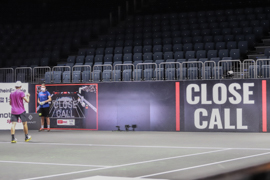
















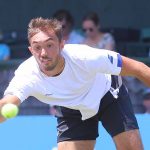




![Hall of Fame Open 2024 - MD R1: A. Goransson (SWE) / S. Verbeek (NED) - J. Paris (GBR) / R. Ramanathan (IND) 6-3 4-6 1-x [10-8]](https://flyctory.com/wp-content/uploads/2024/07/20240717_HoFOpen_GoransVerbeekParisRaman_BANNER-150x150.jpg)
![Hall of Fame Open 2024 - MD R1: Lemmins / Withrow (USA) - Chandrasekar / Kadhe (IND) 3-6 6-3 x-1[7-10]](https://flyctory.com/wp-content/uploads/2024/07/20240717_HoFOpen_LemmonWithrowChardrasKadhe_BANNER-150x150.jpg)
